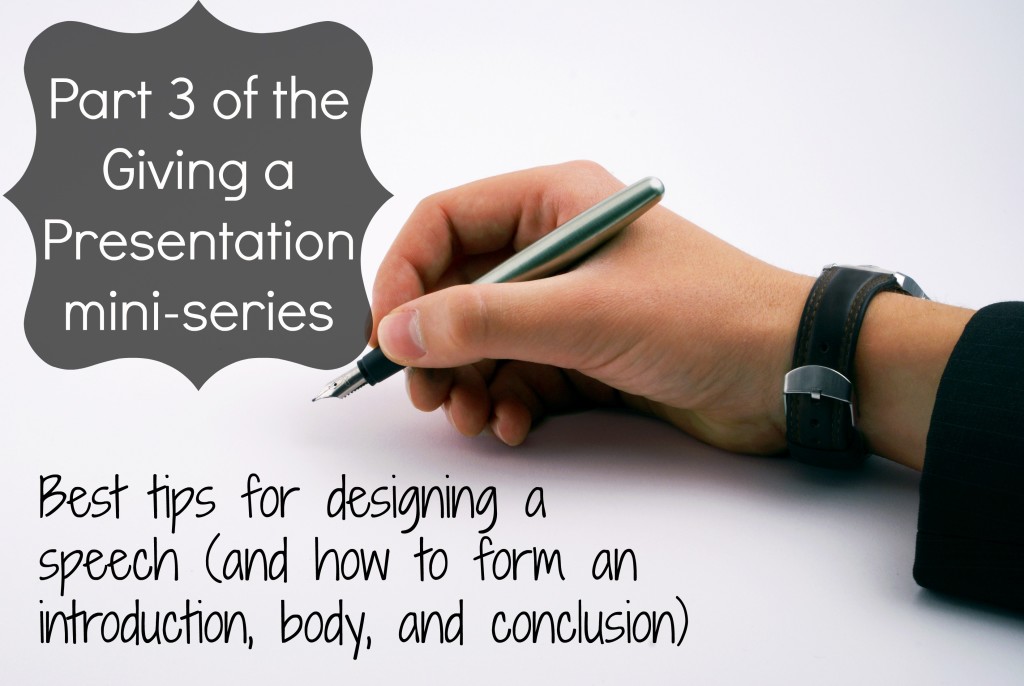Check out the rest of this mini series if you missed them last week!
Part One: Introduction to Public Speaking
Part Two: Preparing and Researching the Speech
Speech Design
After having researched your speech so that you have a working knowledge of the subject and can properly format it into a good quality presentation, it’s time to arrange the speech so that it is well-received. That’s where speech design comes in.
There are three main parts to your speech: the introduction, the body, and the conclusion.
The Introduction
The introduction should be fairly short, taking up less than a quarter of your entire speech. You want to grab the audience’s attention and also to maintain their interest. The first few lines of your speech can make a huge difference depending on the wording that you use to pique the audience’s curiosity so that they want to hear what you have to say. Opening with a controversial statement, a startling statistic, or a quote can all have the rhetorical effect of getting attention.
It’s also important that your audience understands why your presentation is relevant to them in particular. Why should they care what you have to say? Think about this when you’re forming your argument. Briefly outline what you will talk about in your presentation so that the audience is aware of how your speech is going to play out and the issues that you will address.
The Body
The body of the presentation is comprised of the main points of your speech. When working on speech design, choose a couple main points and have a few sub-points for each. These points should be balanced and each should be allotted roughly the same amount of time and emphasis.
Think about the best way to arrange your points so that they make sense. If you are looking at the history and future of something, a chronological ordering will be highly useful. If it’s a cause-effect topic, you can arrange it in that order. Whatever arrangement you choose (and there are many to choose from), it should be suitable to your topic and style of presentation.
The Conclusion
The last part of your presentation is the conclusion, where you wrap up your speech. The conclusion consists of a brief summary of your main points and some kind of memorable statement in closing. As with the introduction, it should be short and concise. There is no need to go on at length, or your conclusion will simply become an extension of the body of the presentation.
Tip: While you’re constructing your speech, be sure to make it flow really well. You don’t want it to be disjointed. The points that you make should be related to one another and the audience should be able to see what direction you are going in. Refer back to earlier points that you made to refresh your audience’s memory and to re-emphasize the importance of them.

[…] Part Three: Speech Design […]
[…] Part Three: How to Design Your Speech […]